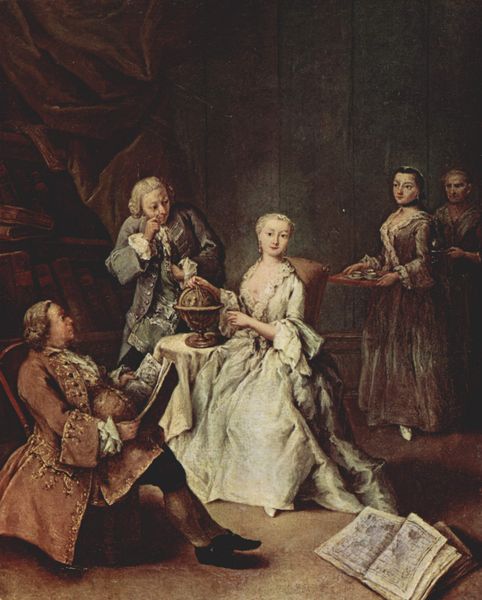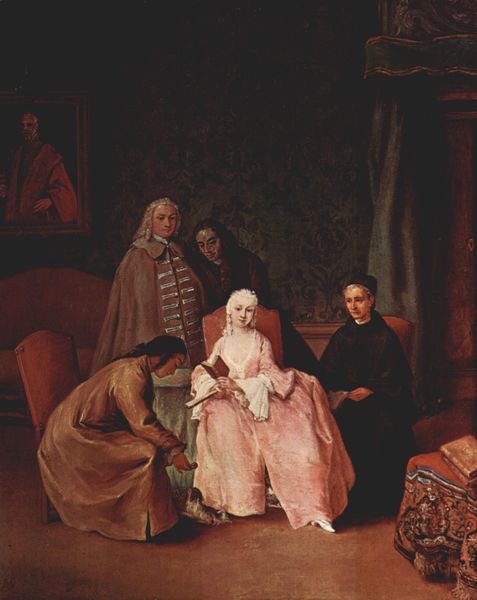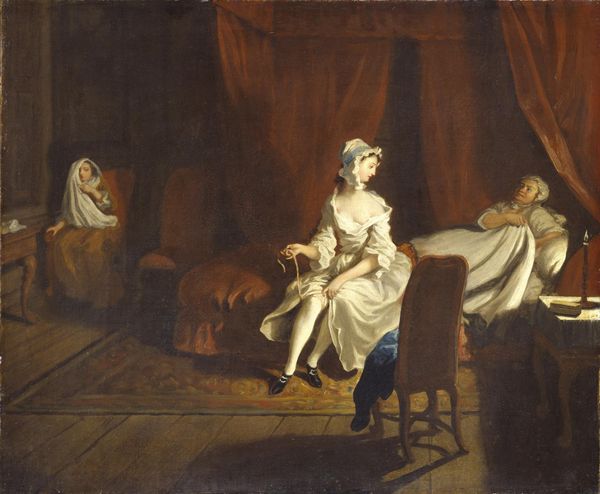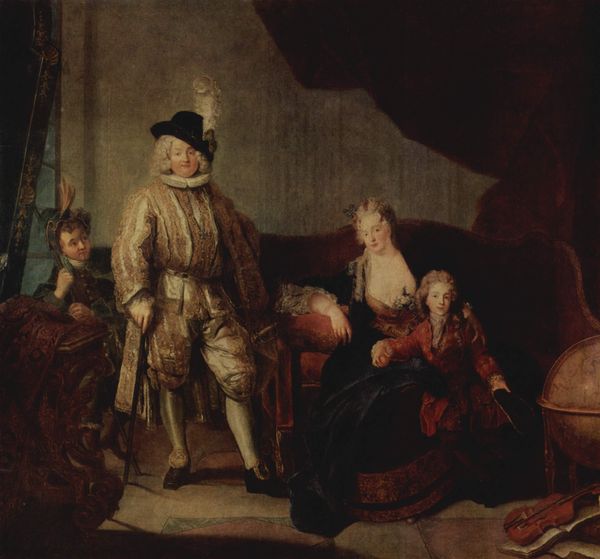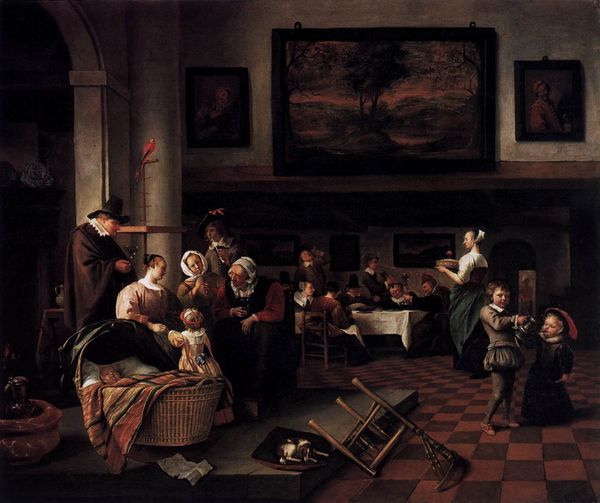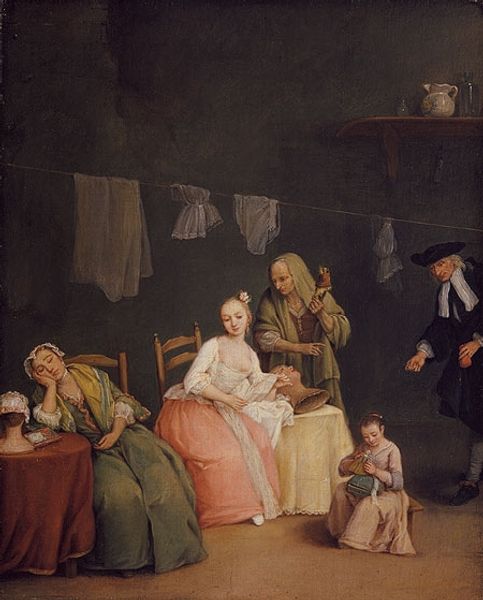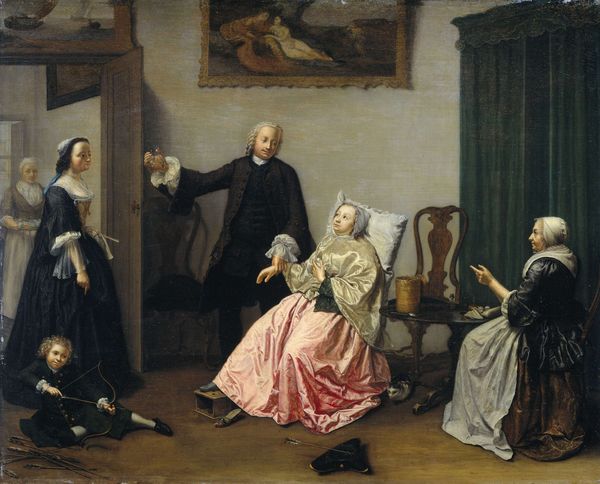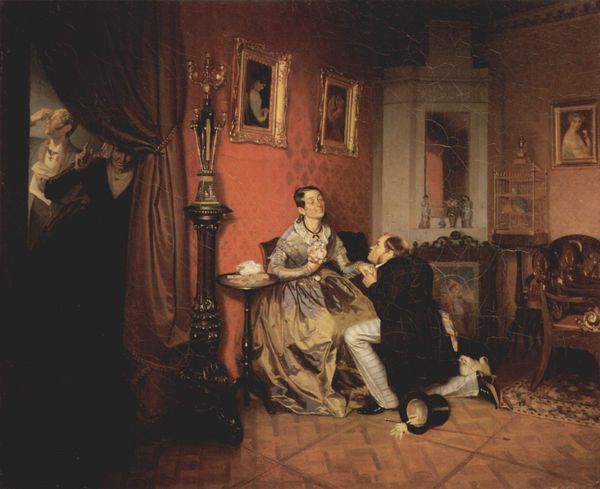
Scene from the Play 'Lubbert Lubbertse of de geadelde boer' by M. van Breda 1761
0:00
0:00
jacobusbuys
Rijksmuseum
Dimensions: height 57 cm, width 44.5 cm, depth 5.3 cm
Copyright: Rijks Museum: Open Domain
Editor: This is Jacobus Buys' "Scene from the Play 'Lubbert Lubbertse of de geadelde boer' by M. van Breda," created in 1761, using oil paint. The almost theatrical lighting gives it such drama, and the fabrics look so weighty and expensive. What strikes you most about this painting? Curator: It’s fascinating to consider this work through a materialist lens. Look at the oil paint itself, how Buys builds up layers to create the illusion of candlelight reflecting off satin. The pigment, where did it come from? The lapis lazuli, the ochre? These materials tell stories of trade routes, of exploited labor in mines and workshops. Consider, too, the clothes: that extravagant gown isn't just an aesthetic choice; it’s a potent symbol of wealth derived from agricultural production. How does the painting elevate or critique this social structure? Editor: So, you’re saying the visible prosperity within the artwork isn't just superficial; it's rooted in real-world processes of production? Curator: Exactly. Think about the play this depicts. A play created by Breda. It allows a commodification of the peasant-experience for consumption by richer audience members, much like how history painting turns grand events into consumable objects, both depending upon their materials: pigments, canvas, acting and clothing for players, writing implements. We can trace how cultural productions get consumed through visual mediums. What is being sold to who here? Editor: That makes me rethink the way the figures are posed and dressed. It all highlights the material conditions of the time! Thank you! Curator: And consider also the viewers, like us. Viewing a scene and discussing materials over 250 years after the paintings completion...that says something about enduring class interest!
Comments
No comments
Be the first to comment and join the conversation on the ultimate creative platform.


